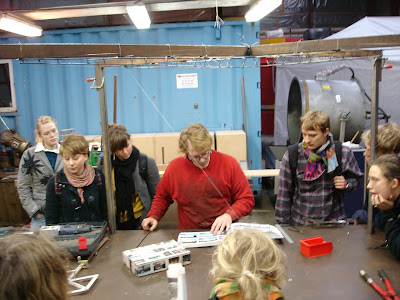Together with the Basic Studies Department of the Royal Danish Academy of Fine Arts we set out to explore Refshaleøen. However, we strayed from our route before we got that far – into an area that can scarcely have a name.
Before that we passed this converse maelstrom: a hole under the water from which water pours out with great force.
This tree is just on the verge of being a public tree, but in general the area is one of the places where one finds most wild apple trees and many different kinds. These were however not terribly good eating apples – yet. Pia did a little further research on apples and polluted sites. Besides the fact that it is important to wash the apples, one should also remember that even if it is not large quantities of poisonous substances that can accumulate in apples, it is also a factor how many one eats.
Sometimes it can be difficult to decide whether one is inside or outside a fence. This is particularly the case in this locality because the transitions from public to private areas are so fluid.
We were kindly invited in to see a demonstration of an art project to recreate a full size Twin Towers in smoke. A gigantic rectangular steel frame mounted with a number of smoke canons is dropped from a height of about 400 meters. The contours of the building will be outlined for a time by the smoke trails.
One’s associations flow freely and sometimes materialise in the best fashion: Edgar Allan Poe and Jules Verne wrote about maelstroms and mythologised freely on the basis of a real whirlpool off the Lofoten Islands in Norway. Peter Madsen’s self-built submarine makes one think of a realisation of Jules Verne’s twenty thousand leagues under the sea.
We guess that the willow mound at the boundary of the wastewater treatment plant Lynetten has something to do with phytoremediation – a technique that makes use of the ability of plants to remove heavy metals from the soil.





